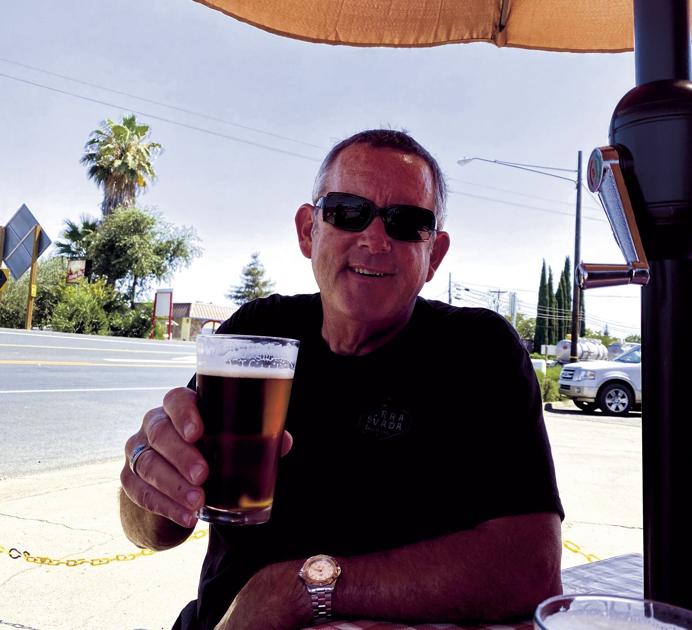
Hi, my name is Bob Weisenberg and I’m fond of craft beer. Maybe fond is too gentle a word. I love good, craft beer.
My goal in these articles is to pull away the veil from the mysteries of craft beer and encourage everyone to experience something different than those mega beer brewers we have all grown up on. In coming articles, I will delve into the history of beer, craft beer tourism, different types of craft beers, economic impact of the craft beer industry, our local craft beer/hop scene, craft beer travel, terminology, and craft beer festivals to name a few.
First a very brief history lesson on beer. Our Native American tribes were brewing an alcoholic beverage made from corn and tree sap before European explorers ever thought of sailing the ocean blue. The first actual brewery in the USA founded by European settlers is a bit of a face off. Some industry historians claim the first known brewery was either founded in 1612 or 1632 depending upon who you believe. One thing that’s for certain the brewery was located in what’s now called Lower Manhattan, N.Y., and brewed by immigrants from the Netherlands (Holland) and England. German immigrants quickly followed along with their traditional pilsners and lagers which took hold and really created the mega brewers we know today … Coors, Budweiser, Pabst, Schlitz and Miller.
Yuengling (pronounced "ying-ling"), is the oldest operating brewery in the USA, having been established and brewing beer since 1829. Prohibition came and went from 1920 to 1933 and domestic beer consumption rocketed thereafter in the 20th century. Lastly there is evidence that beer has been made and consumed since 2500 BC.
Let’s start with the basics. What is the traditional definition of craft beer? Or maybe the real question is when does a craft brewery stop being labeled as such? A craft beer is defined as “a beer made in a traditional or non-mechanized way by a small brewery.”
The big year for craft beer in the USA was 1978 when Congress and President Jimmy Carter passed and signed into law HR 1337 making home brewing legal in the USA. It had been prohibited as part of the 18th Amendment to our Constitution since 1920.
Church bells rang and angels sang all across the land on Oct. 14, 1978 when the bill was finally established law. The first two entrepreneurs who took homebrewing and really created today’s craft beer industry were Ken Grossman of Sierra Nevada in Chico, and Jim Koch of The Boston Beer Company. Opposite coasts but similar passion for their love of beer, especially beer that was different than those big domestic brewers mentioned earlier that today still manufacture 80-85% of all beer consumed. You’re saying to yourself Sierra Nevada and Boston Beer certainly qualify as “big” with each producing well over 1 million plus barrels per year.
This is where the term “craft beer” becomes complicated. One beer drinker may think an ice-cold Blue Moon Belgian Wheat (made by Coors) is the best craft beer on the planet. Most industry associations however use the terms craft beer and craft brewer in different ways. Our Blue Moon example may be classified as a craft beer but it’s not produced by a craft brewer. The Brewers Association defines a craft brewer as one that is “small, independent and traditional.” You can see that the nuances of the English language and modern marketing have complicated things.
Here are two bits of advice. 1. We live in possibly one of the best areas in the world for craft brewers. Not only do we have excellent northern California craft breweries like Sierra Nevada, Track Seven, Knee Deep, Dust Bowl, Morgan Territory and Revision to name a few, but we have several examples locally to explore right here in Livable, Loveable Lodi. Stop in and say hello to Dancing Fox, 5 Window, Idol, Lodi Beer Co. or Highwater. All of our Lodi brewers are small, independent and traditional. 2. Not all craft beers are super hoppy, bitter, high-alcohol IPAs. Explore a bit.
Try a sour, a Kolsch, a porter or a cream ale. Remember variety is the spice of life. Depending upon your data source there is somewhere between 5,000-7,000 craft brewers across the country … we have a lot beer to drink.
Until next time have a beer with a friend, be socially distant, and be safe.
Cheers!
Bob Weisenberg is a semi-retired HVAC executive and lifelong lover of beer while living the good life in Woodbridge
July 29, 2020 at 08:37AM
https://ift.tt/3jLKaqS
Bob's Beer Blog: So you want to learn about craft beer? - Lodi News-Sentinel
https://ift.tt/2NyjRFM
Beer

No comments:
Post a Comment